Expressway technology development
- Corporate Top
- Business guide
- Technology, environment and overseas business
- Expressway technology development
We are developing technology to provide safe and secure Expressway.
Transformation of maintenance management business process

In the series of business process from inspection to repair, we aim to improve the quality of business by utilizing SMH * development technology to double the productivity and Standard the decision making process.
- SMH (Smart Maintenance Highway)
・・・・
Expressway in order to ensure the long-term "safety and security" of, ICT and to take advantage of the latest technologies such as robotics, Expressway project to dramatically improve the productivity in Asset Management
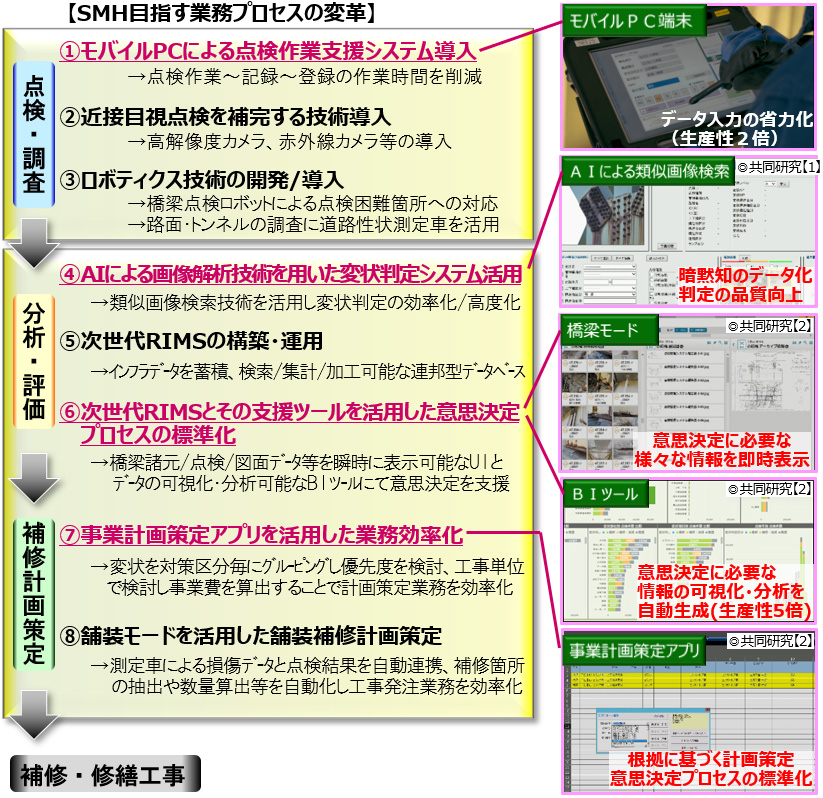
◎ Joint research [1]: Media Dynamics Laboratory, Graduate School of Information Science, Hokkaido University Under development in collaboration with
◎ Joint research [2]: The University of Tokyo Graduate School of Information Studies External Under development in collaboration with
Use as an operation and maintenance business base for all-around road images
◎ Joint research [3]
You can instantly grasp the local situation (main line / side road / underpass, etc.) and measure the distance in the image.
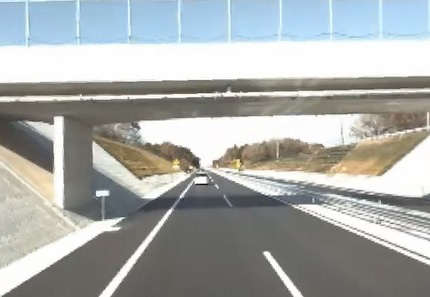
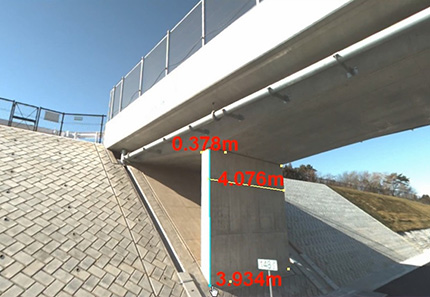
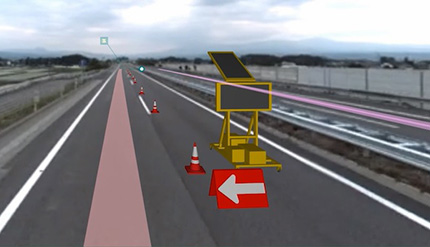
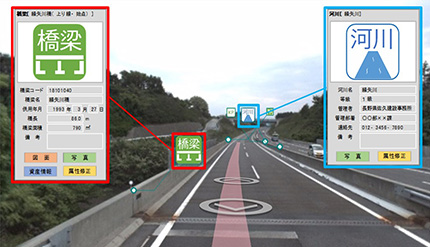
◎ Joint research [3]: Trion Co., Ltd. Under development in collaboration with
MR * (Mixed Reality) Technician Training Tool Utilizing Technology
◎ PRETES-e
* MR (Mixed Reality): Technology that fuses real and virtual spaces
By visualizing the internal structure of the bridge with MR technology, it is possible to educate about the characteristics of design and construction, representative deformation and deterioration mechanism, etc., and it is possible to have more understanding and effective training
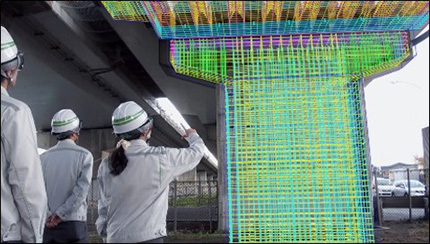
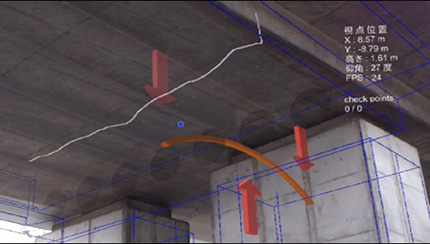
◎ PRETES-e: NEXCO Engineering Hokkaido Co., Ltd. Under development
Automation of spraying of anti-freezing agent using location information
This system is a device that automatically controls spraying by linking GPS position information and antifreeze spraying device. In the system, work contents such as “spray amount”, “spray width”, and “spray start / stop” of the antifreezing agent according to the road structure such as tunnels and bridges are registered in advance, and the operator actually performs the work before starting the work. By simply setting the "working section" that travels to, you can perform spraying work of the antifreezing agent accurately.
Also, even when operating manually, multiple operating devices installed in the driver's seat are integrated into one screen, enabling one-touch operation.

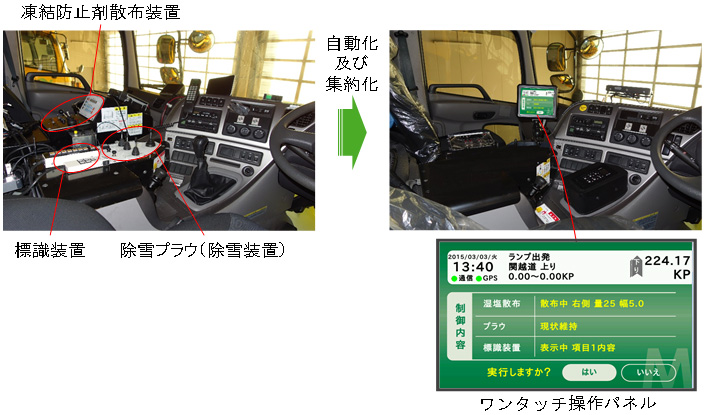
Attachment
Introduction of automatic antifreeze system (ISCOS)
ISCOS grasps the optimal spray amount of the antifreezing agent based on the road surface discrimination data obtained from CAIS®, and automatically controls the spraying section / spraying amount by the automatic antifreezing agent spraying device to meet the road surface condition. This is the world's first technology that has realized automatic spraying.
[Outline of CAIS®]
Based on the characteristic vibration waveform obtained from the acceleration sensor inside the tire according to the road surface condition, the road surface such as freezing and wetness is determined.
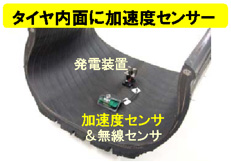
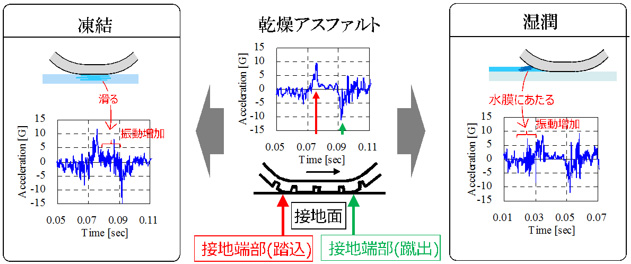
- ISCOS (Intelligent Salting Control Optimization System) :( stock) NEXCO Engineering Hokkaido & Co., Ltd. Bridgestone patented technology
- CAIS (Contact Area Information Sensing): Bridgestone Corporation's patented technology
[Outline of ISCOS]
The CAIS® road surface determination result is sent to the WEB server via the Internet in real time and a database is constructed. By accessing the web based on that data, it is possible to calculate the optimum amount of spray according to the road surface condition every 100 m. The antifreeze sprayer equipped with an automatic spraying device automatically accesses the web and downloads road surface data. The anti-freezing agent spray vehicle automatically performs spraying work just by running.
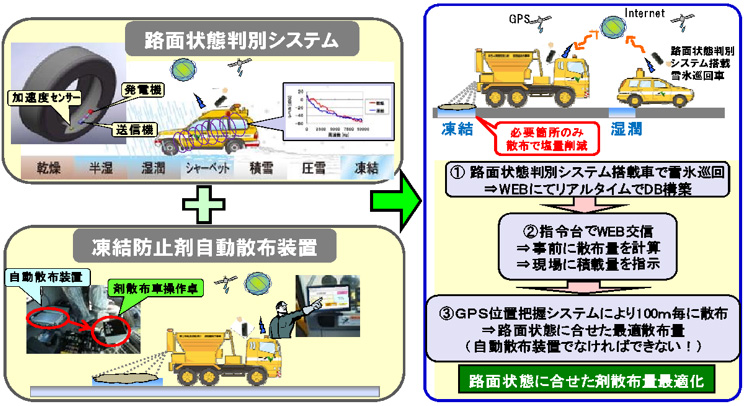
Attachment
Introduction and utilization of Road Zipper® System
NEXCO EAST Group,
- “Increase in safety” by completely separating the traffic lane and the work area with a concrete guard fence in terms of construction regulations, etc.
- Improving work efficiency of the entire construction by promptly implementing regulations such as switching lane regulations
- "Reduction of traffic jams due to construction regulations" by changing the scope of construction regulations and the number of traffic lanes according to the time of day when there are many customers.
For this purpose, we are introducing and utilizing the Road Zipper® System.
Road Zipper® System Overview
The Road Zipper® System is a system that can move the concrete protective fence (Concrete Reactive Tension System) installation position using a dedicated protective fence switching vehicle (hereinafter referred to as “BTM”).
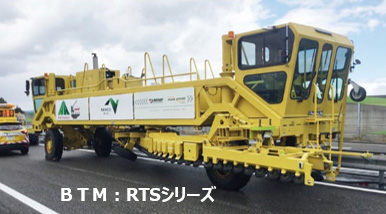
《BTM》 * Specifications of RTS series (pictured left)
- Weight: Approximately 22 tons when empty, 19 tons when transported (conveyor part removed)
- Travel speed: 5 to 15 km / h during work, 20 to 30 km / h during forwarding
- Width of movement of protective fence: 3-5.5 m / time
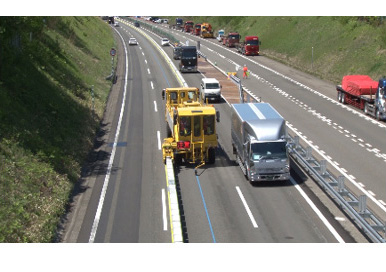
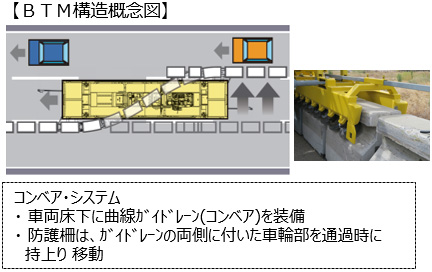

Weight: 680kg / piece, extension: 1000mm
Height: 810mm, width 460mm
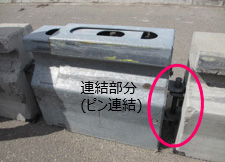
Weight: 306kg / piece, Extension: 1000mm
Stretchable steel extents at regular intervals
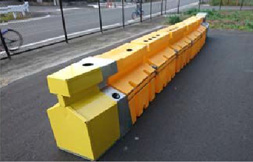
Installed at the opening (end) for buffering collision
Change the quantity according to the regulation speed (collision speed)
Introduction of Road Zipper® System
Road Zipper®System is, the United States Lindsay Transportation Sales & Service LLC of (the United States) (hereinafter referred to as "LINDSAY Company") and is sold development, manufacturing, and, currently, in Japan (Ltd.) NEXCO East Innovation & Communications (NI & C) Sells and leases domestically.
It should be noted that, when the Japan introduction of the Road Zipper®System, NEXCO in the East, has been carried out to confirm verification of the impact of the vehicle according to the present system, we have confirmed the usefulness in comparison with the regulation method according to the conventional Rabakon .
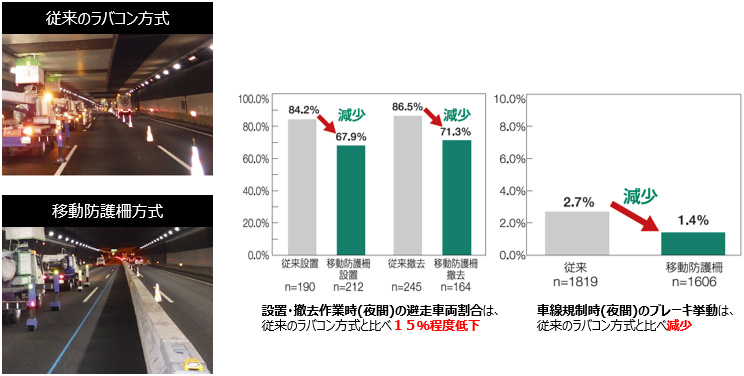
Utilization of Road Zipper® System
| Route / section | Construction content | Overview |
|---|---|---|
| Joban Expressway Kashiwa IC-Nagareyama IC | Scrap countermeasure work | It was introduced for the first time in Japan as a proof experiment to confirm the workability of the load zipper system and to grasp the traffic impact in terms of the work lane regulations for anti-scraping work. |
| Gaikan Expressway Oizumi JCT-Wako IC | Belt conveyor installation work | As a construction facility for transporting excavated soil generated from main line tunnel construction, it is used to regulate the main line of construction where conveyors are installed in existing sections. |
| Kan-Etsu Expressway Shibukawa Ikaho IC-Maebashi IC | Additional lane installation work | In the construction work to extend the deceleration lane (additional lane installation) at the exit of Maebashi IC (In-bound line), it is used to regulate construction work according to the time of use by customers. |
| Do-O Expressway Kita-Hiroshima IC ~ Eniwa IC | Floor board replacement work | When replacing the aged reinforced concrete floorboards on the Shimamatsugawa Bridge between Kitahiroshima IC and Eniwa IC, it is used to regulate two-way traffic by changing the number of lanes according to the time of use by customers. |
| Hokuriku Expressway Nakanoshima Mitsuke IC-Nagaoka JCT | Floor board replacement work | At the Takase Bridge (In-bound line) between Nakanoshima Mitsuke IC and Nagaoka JCT, it was used for the first time in Niigata Prefecture to carry out large-scale bridge renewal work (floor slab replacement work). |
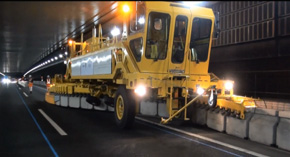
Scrap countermeasure construction regulation status
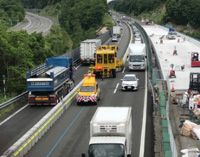
Floor slab replacement work Restriction on the number of lanes
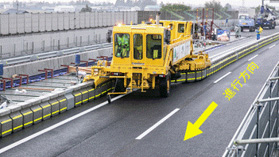
Floor slab replacement construction regulation status (construction yard expansion)

To view the PDF file, you need the Adobe Systems plug-in software "Acrobat Reader (Japanese version)". If you do not have Download from here (free)Please use it.
